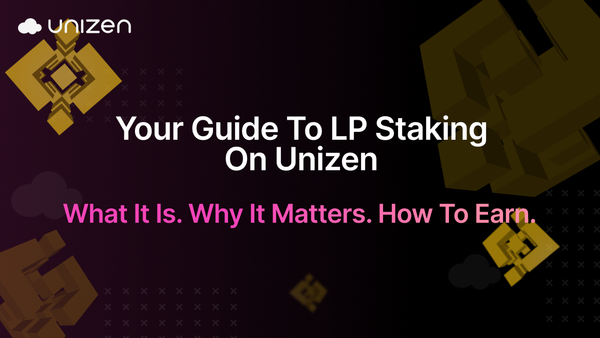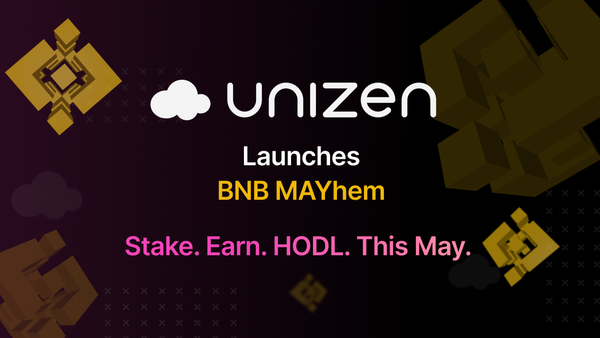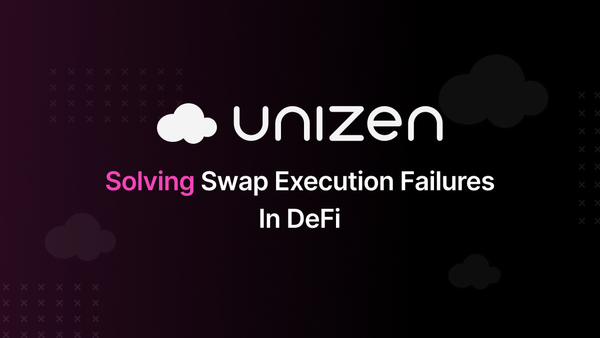What Is Crypto Staking? The Ultimate Cryptocurrency Staking Guide for 2025
Earn with Crypto Staking

Single crypto investments can automatically generate earned rewards while you avoid trading activity and complex trading methods. The staking process lets you increase the value of your digital assets by maintaining network security as part of supporting blockchain operations. So, what is crypto staking in simple terms? It's the process of locking your cryptocurrency on a blockchain through its proof-of-stake system which also provides rewards as a result.
You can earn staking rewards in addition to network validation support while using a proof-of-stake system to protect blockchain networks from network attacks. Your rewards typically appear as new crypto coins in your account. This system lets you receive a limited distribution of additional cryptocurrency after safely holding your digital assets for financial development purposes. This article provides a full explanation of crypto staking functions, explanations about its operational processes alongside recommended paths for beginners, and warnings about typical missteps.
Understanding How Crypto Staking Works and Its Impact on the Crypto Ecosystem
The locking mechanism of digital assets into blockchain networks utilizing the Proof of Stake (PoS) or Delegated Proof of Stake (DPoS) consensus types operates as the fundamental principle behind staking crypto. The process of validating blockchain transactions by committing your coins will result in staking rewards typically delivered as additional crypto tokens. The crypto version of interest-bearing savings accounts provides users with security benefits by allowing them to participate in network maintenance processes.
Crypto staking does not involve loaning out your assets nor result in ownership loss to outside entities. Your assets remain secure under your control either in personal wallets or in a trusted platform such as Unizen Earn.

Why Staking Exists in Blockchain Technology
Before diving deeper into what is crypto staking, it’s crucial to understand its role in blockchain ecosystems. Proof of Stake network validators serves as the consensus-reaching figures because they both stake tokens and undergo random selection processes to validate transactions and produce new blocks. Although it skips Bitcoin-style Proof of Work mining practices for transaction verification.
Participants who conduct their work legitimately receive rewards from the ecosystem. Stakers who perpetrate malicious actions face slashing consequences which result in losing tokens from their stake. Blockchain networks operate more stably as well as efficiently through a system that enhances their security and better usage of environmental resources. Ethereum 2.0, Polkadot, and Solana use staking as an essential operational foundation.
Types of Crypto Staking
Staking crypto has several different methods to choose from which correspond to the wide array of investment approaches. Understanding these options is essential when figuring out what is crypto staking and which method suits your investment style.
- Solo Staking: Users who run their own validator node participate in this process. With this method, you obtain full control and enhanced rewards, although you need technical expertise and specific hardware along with a minimal balance of 32 ETH for Ethereum.
- Staking Pools: Multiple investors joining their tokens in a pool improves the odds for one of them to become a validator. Rewards distributed through this method match the levels of contribution made by individual members. Crypto holders who lack extensive investments or technical skills should choose staking pools for their earning opportunities.
- Exchange Staking: Users can stake their assets through Unizen, among other major exchanges, while letting the platform select validators and distribute rewards automatically. Beginners should choose this method because it provides the most convenient entry point.
- Liquid Staking: The new staking approach enables users to maintain trading access to their digital assets through derivative versions while keeping them staked. Through its liquid staking model, the system gives users the capacity to use DeFi applications while maintaining access to staking rewards.
Benefits of Staking Crypto and Validator Participation
As you explore what is crypto staking, you’ll quickly see why it’s become a popular strategy for investors looking to maximize the value of their digital assets. Here are the key benefits:
- Earn Passive Income: Passive earnings develop from your growing cryptocurrency collection through passive work.
- Eco-Friendly Alternative to Mining: PoS harnesses less energy than mining to serve as an eco-friendly system.
- Enhance Blockchain Security: Your engagement with the blockchain network leads to heightened security levels.
- Governance Participation: Electronic currencies operated by the proof-of-stake consensus generally let their stakers join network voting decisions.
- Access to New Opportunities: Users on platforms like Unizen can benefit from cross-chain staking as well as earn rewards from ZenX Labs with their emerging projects.
Potential Risks of Staking Crypto
No financial strategy operates without potential risks, which also affects crypto staking systems. The following points will help you understand the situation better.
- Price Volatility: The value of your locked crypto assets could decline since price volatility occurs throughout the lock-up period.
- Lock-In Periods: Some networks restrict user access to funds by forcing token owners to stay locked in for extended periods of weeks or months.
- Slashing Penalties: A portion of validator staked tokens becomes at risk when they malfunction or act dishonestly and it results in losses for all delegators.
- Centralization Risk: Too many tokens concentrated in one pool create conditions that may attack decentralization throughout the network.
- Taxation Implications: Under tax laws staking rewards might become classified as taxable income based on your location of residence.
What Is Cryptocurrency Staking Best For? Long-Term or Short-Term Investors?
When understanding what is crypto staking, one key question arises: is it better suited for long-term holders or short-term traders? The investment length for staking depends on your objectives because long-term investors obtain the most benefits.
Staking isn’t a get-rich-quick scheme. The system aims at serving investors who trust blockchain's future potential while dedicating their crypto resources to enduring yet consistent expansion. Only investors with months or years of token possession can maximize their benefits from staking rewards because their accumulated returns gradually increase.
If you’re someone who:
- Believes platforms like Ethereum alongside Polkadot and Cardano networks to thrive in the long run.
- Is willing to commit their assets by keeping them locked in and receiving predictable and constant rewards.
- Your goal is to let your investment grow automatically without facing daily stress from trading actions.
Staking serves you well if these three conditions apply. The process of staking offers some opportunities to traders who hold assets for brief periods. The introduction of liquid staking technology enables trading participation through derivative tokens, which provide staking benefits and increased flexibility. You can provide your assets for staking through liquid staking protocols by using tradeable derivative tokens that preserve your liquidity. Staking has become more flexible which has opened barriers for people who desire passive income through trading activities.
The long-term investment approach combined with confident blockchain technology understanding works best for staking crypto. Users participating in short-term markets now have the opportunity to stake their assets through liquid staking techniques, which allow them to maintain trading flexibility.
How to Start Staking Crypto: A Step-by-step Guide.
Now that you understand what crypto staking is, the next step is learning how to get started. The staking practice has a basic setup but demands careful focus to achieve good rewards while keeping your money safe. The following basic steps will help you begin staking confidently :
1. Choose the Right Cryptocurrency
Not all cryptocurrencies support staking. Begin with a token that works on Proof of Stake (PoS) or comparable consensus methods. Many investors choose ETH, ADA, SOL, and DOT for their staking activities. Review the staking rules and reward schedule for every blockchain before starting your staking operations.
2. Set Up a Secure Wallet
Prepare your wallet to support the chosen cryptocurrency before starting staking. Adding extra safety for your tokens requires choosing exchange, software or hardware wallet security features. Be certain your wallet comes with built-in functions to appoint delegates or access staking services.
3. Fund Your Wallet
Put your selected staking assets into your wallet for storage. To take part, you need to use your crypto exchange purchases or move coins from another wallet. Make sure that your deposited funds follow the required minimum staking standards defined by the network or platform.
4. Choose Your Staking Method
People choose from multiple staking methods when participating in cryptocurrency networks. Operating a validator node needs technical experience and major investment funds as a solo stake player. When you join a group of stakers to stake together, you can share the earned rewards. To engage in cryptocurrency staking functions, choose the platform that manages technology operations.
5. Delegate and Confirm
When you choose staking pools or platforms as your staking method, you need to transfer your crypto. Most stakers need to find a validator or staking provider and verify their service conditions. Keep an eye on how long your funds are locked in plus expected returns and service costs.
6. Monitor Your Rewards
You will start earning rewards after your assets are staked. Different blockchains provide reward payments at daily, weekly, or epoch intervals. Use your platform's site or wallet page to see both your earned funds and the way your validator functions.
7. Unstake When Ready
You should know about any required delays you must wait once you unstake. After you stake your assets into the network, they normally have to cool down for fixed periods between a couple of hours and a few days.
Advanced Crypto Staking Strategies
Learning about crypto staking at its core allows you to develop and implement sophisticated methods to reach increased profit potentials. Skilled staking investors now adopt methods which unite asset protection with account mobility and enhanced earnings possibilities despite the developing staking market.
1. Diversification Across Blockchains
Veteran stakers spread their assets across various blockchain systems, which include Ethereum together with Polkadot, Solana, and Cardano. The method decreases vulnerabilities resulting from network-specific problems and market price shifts. Your multiple network investments ensure constant earnings because a decrease in APY or network availability affects only some while the rest of your assets keep producing returns.
2. Layered Staking
The staking approach of layered staking uses long-term asset locking together with staked liquid assets. Going through passive income allows you to stay engaged with other DeFi opportunities while keeping your money fluid. Unizen Earn lets users embed these investment approaches into their operations together.
3. Re-Staking Rewards
The majority of staking investors reinvest their earned rewards by putting them back into staking processes. Your earnings will multiply through successive periods due to compound effects in the same way that traditional financial principles work with compound interest.
How Does Staking Influence DeFi?
If you’re wondering what is crypto staking’s place in the broader DeFi ecosystem, the answer lies in liquidity, security, and governance.
Liquidity Enhancement Through Liquid Staking
Liquidity staking solutions allow stakers to stake a token as such into the protocol, which is then converted into liquid derivatives that can be used for trading or used in lending protocols and liquidity pools. Activity everywhere across DeFi platforms is being boosted while staking rewards keep running in the background. As an underlying technology, Unizen will provide users with flexible cross-chain staking opportunities, giving it the unique position of supporting this evolution.
Governance and Voting Power
Usually, staking the tokens brings with them governance rights which permit the participants to have a say on protocol updates, network decisions and treasury management. This democratic element adds further to the cornerstones of DeFi’s ethos, decentralization and community involvement.
Strengthening Security
Users can take part in staking that makes them participate directly to reach network security which means that blockchain protocols are not vulnerable to malicious attacks and data manipulation. With a well-secured network, trust and adoption on DeFi platforms are then enhanced.
How Crypto Staking Differs Across Blockchains
When exploring what is crypto staking, it’s important to understand that different blockchains have unique staking models, requirements, and benefits. These leading networks show their differences through these specifications in 2025:
Ethereum (ETH)
Ethereum demands participants to demonstrate their Proof of Stake ownership consisting of a minimum of 32 ETH. For small investors to enter this market they can use staking pools or liquid staking platforms. The rewards from staking typically come between 4% and 6% each year. Ethereum staking offers its biggest advantage to investors who want to stake their long-term investments to support smart contract technology.
Cardano (ADA)
You can stake Cardano with no minimum investment, but 5 ADA is the recommended starting amount. APY rates hover between 3% and 5%. You can stake Cardano assets without losing control because delegation handles the process, and automatic compounding boosts your earnings steadily.
Polkadot (DOT)
The Nominated Proof of Stake system on Polkadot takes security and decentralization into equal consideration. You need about 10 to 20 DOT in your balance to stake successfully. The market offers the biggest annual rewards between 10% and 14%. Polkadot staking works best for investors who want to help govern blockchain projects while backing its platform to develop multiple blockchain networks.
Solana (SOL)
People choose Solana because its platform processes transactions fast and has expanded capacity. Your earning percentage may sit between 6% to 8%, as staking rewards depend on the validator you select. People can now stake their assets on Solana and retain easy access to their funds through staking token tradeability.
Tezos (XTZ)
Tezos operates on Liquid Proof of Stake (LPoS) that enables users to stake minimal amounts starting from 1 XTZ. Returns from staking funds usually range from 5% to 6% every year. Investors who want basic easy entry into blockchain can depend on Tezos for its simple delegation policies and free stake duration. Tezos network remains secure because its validators are known as bakers who keep the system functioning.
Algorand (ALGO)
Users on Algorand receive staking rewards automatically from its PPoS system by holding tokens in their wallets. The average yearly gains in staking run between 5% and 6%. New users find Algorand staking easy because it requires no complex setup to earn passive income.
The Future of Staking in Crypto: Trends to Watch
Understanding crypto staking isn’t complete without looking toward its future. Multiple important trends during the years from 2025 to beyond define the changes taking place in staking activities.
- Institutional Adoption: Major banks are starting to hold stake assets due to special wallet management systems. When institutional investors join crypto staking, it will create safer networks which makes the system more attractive overall.
- Cross-Chain Staking: When blockchain systems begin sharing information with each other staking operations between different networks will increase. Unizen works to enable users to stake and move assets across various blockchain platforms, which enhances the freedom and markets for investment.
Integration with AI
- Green Blockchain Initiatives: Staking technologies will emphasize eco-friendly features through low-power operations to support good environmental behaviors with their users.
- Enhanced User Education: Companies that host staking services need to create teaching materials when more investors join the market every day. Unizen helps new users enter DeFi by publishing helpful guides such as What Is DeFi and How Can You Participate? and how-to tutorials to earn rewards safely.
Expert Tips for Staking Beginners and Pros
For Beginners:
- Start Small: Put only a small portion of your investments into the market first.
- Research the Blockchain: Learn about blockchain rules and staking duration information first.
- Use Trusted Platforms: Choose regulated platforms because they offer secure services with proven trustworthiness.
For Advanced Stakers:
- Leverage Liquid Staking: Stake your assets in liquid form to earn money on your choices.
- Combine Yield Strategies: Beginners and experienced stakers should mix stake farming to generate multiple sources of passive income.
- Stay Updated: Watch for community updates about protocol changes.
Mistakes to Avoid When Staking Crypto
All investors can make errors regardless of their expertise level. These are typical things that traders should avoid when they stake crypto:
- Staking Without Research: You should not stake your assets without first understanding how a system works due to its available earnings.
- Ignoring Lock-In Terms: Read all lock-in period terms before you stake.
- Over-Staking in One Asset: Distribute your stake across different assets to shield yourself from risk.
- Disregarding Validator Performance: Bad validator activity can decrease your reward earnings.
- Neglecting Security: Choose hardware wallets when staking alone or work with tested staking platforms.
Popular Staking Cryptocurrencies Platforms in 2025
Having a basic knowledge of crypto staking allows you to select the best platform for your needs. Your platform selection will impact the way to earn, the security, and service quality. Here are the most popular user-friendly platforms for cryptocurrency staking in 2025.
- Binance: Binance remains one of the most popular platforms for staking crypto. Users can choose fixed-duration stake periods or stake freely while accessing 60 plus token options. Binance suits investors at all levels because it offers great rates and a simple staking setup.
- Unizen Earn: People favor Unizen Earn because it offers staking opportunities rather than simple staking services. It provides an easy-to-use dashboard that allows users to stake multiple tokens and then earn rewards by holding various digital currencies. Unizen provides smart investors with a whole ecosystem that includes ZenX Labs and easy cross-chain connections on top of its staking services.
- Kraken: Kraken provides users with both secure and user-friendly services. It lets you stake 20 different cryptocurrencies and stands out as one of the few platforms that enables immediate asset unstaking for particular tokens. You should pick Kraken for staking if you value quality security alongside basic staking tools.
- Coinbase: The process of understanding and learning about crypto staking through Coinbase remains easy for beginners to understand. It's a trustworthy and easy-to-use platform, with automatic rewards and excellent compliance coupled with a simple interface that attracts new stakers. Although its staking rates may not always be the highest lower earnings potential, its reputation for compliance makes it a trustworthy starting point.
- Bitpanda: European investors find Bitpanda to provide exceptional solutions. Users can easily understand this platform's staking interface while it provides an expanding number of assets with attractive annual percentage yields (APYs). Through education and staking pools, Bitpanda allows small investors to participate in staking cryptocurrency.
Where to Stake Cryptocurrency: Choosing the Best Staking Options
Before staking, it's important to research all key elements of your chosen platform including security protocols, lock-in duration as well as validator standards and expense structures. Transparency matters. Unizen Earn offers staking with flexible options. The platform stands out as an excellent choice if you seek flexibility along with innovation and strong yield opportunities in your investment platform.
Conclusion
Crypto staking is one of the most effective ways to benefit your investments and support blockchain security. Understanding what is crypto staking is knowing how to put your tokens into a locked state while contributing to validation work, allowing you to earn rewards and stay connected to the decentralized crypto network. Stakers enter the crypto economy through this advanced activity. Your digital asset holdings grow stronger with personal or pool-based crypto staking, which makes you part of blockchain protection efforts.
Businesses that want to succeed in the future market should learn how staking operates and how to practice it cautiously for blockchain advantage. Start gaining the financial benefits of blockchain by putting your assets at stake and entering the world of decentralized finance.
Explore Unizen for detailed explanations, up-to-date staking trends, and money-making investment methods.
Frequently Asked Questions About What Is Crypto Staking
1. Can you lose money staking crypto?
While staking offers protection, most of the time, you should understand that it includes small dangers. You may face lower asset value due to price swings, while validators earning less than required can face deductions called slashing. Distributing your crypto investments between different platforms and platforms such as Unizen can decrease your risks.
2. Is staking better than holding crypto?
When you trust in a cryptocurrency project for an extended period, staking offers better returns than passively keeping your holdings. Your crypto remains active when you stake as part of security operations for a monetary return.
3. How long do I have to lock my crypto when staking?
Lock-in periods vary by network. Blockchains permit different methods for stakeholder crypto movement, with some networks needing users to keep coins frozen for specific time periods. For instance, Ethereum 2.0 limits your withdrawals, while liquid staking makes it easier for you to access your funds as needed. Learn all lock-up restrictions before starting the staking process.
4. Are staking rewards taxable?
People must pay taxes on their staking benefits in most areas. Speak to a tax professional who knows about crypto investments since crypto tax rules differ from place to place.
5. What is the difference between APR and APY in staking?
Annual Percentage Rate shows basic year interest while Annual Percentage Yield adds in repeated added value of rewards processes. The Unizen Earn platform shows APY to help stakers see their full rewards potential.



